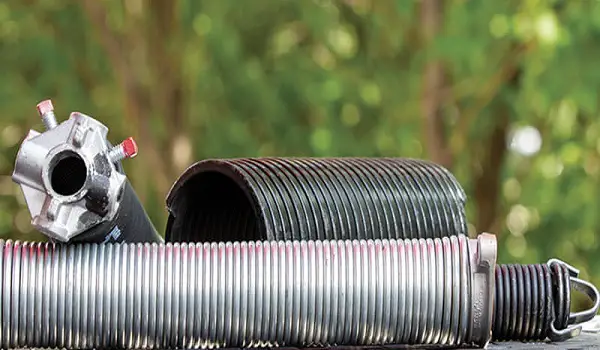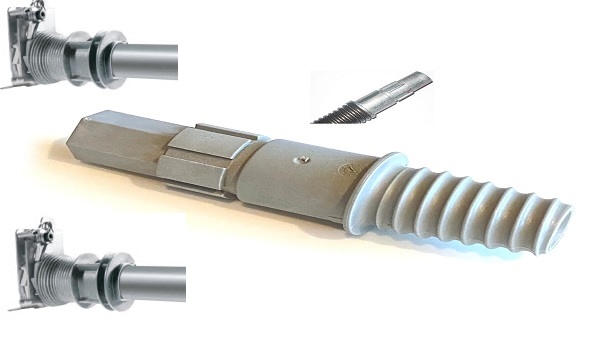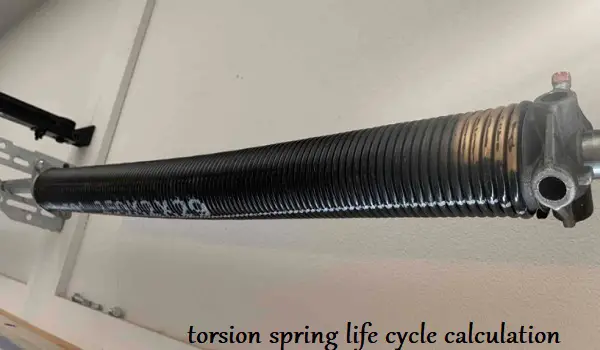Torque Force of Garage Door Springs
When it comes to garage doors, there’s more to them than meets the eye. Behind the seamless operation of your […]

When it comes to garage doors, there’s more to them than meets the eye.
Behind the seamless operation of your garage door lies a complex system of components, and one of the critical elements that ensures smooth functionality is the torque force in the garage door springs.
In this article, I’ll explain what torque force is, how it works, why it’s important, and how to calculate it. I’ll also share some tips on how to maintain your garage door springs so they last for many years.
Additionally, we’ll explore the concept of spring rate, provide guidance on determining your garage door spring’s spring rate, and offer essential safety tips for replacing these vital components.
What is Torque Force?
Torque force refers to the rotational force exerted by a garage door spring when it is wound or unwound.
This force plays a pivotal role in the operation of your garage door, as it counterbalances the weight of the door, allowing it to open and close smoothly.
Without the appropriate torque force, your garage door may become difficult to operate, posing safety hazards and potentially causing damage to your property.
How Does Torque Force Work in Garage Door Springs?
Torque force in garage door springs operates on the principle of tension and compression forces.
When you operate your garage door opener, it exerts force on the springs, causing them to stretch or compress. This force is what enables the door to move up and down.
Why Is It Important to Know the Torque Force of Your Garage Door Springs?
Knowing the torque force of your garage door springs is vital for several reasons. Firstly, it ensures that your door operates smoothly without being too hard to open or close.
If the torque force is too high, it can strain your opener and make the door difficult to move. Conversely, if it’s too low, the door may sag or bind, creating safety hazards.
How to Calculate Torque Force of Garage Door Springs
To calculate the torque force of your garage door springs, you can use a simple formula:
Torque force = (Spring rate)(Spring length)
The spring rate measures the force required to compress or extend the spring by a unit of length, typically in pounds per inch (lbs/in). The spring length is the total length of the spring, which you can measure using a tape measure.
Once you have these values, calculate the torque force. If the result does not fall within the manufacturer’s specifications, it may be time to replace your springs.
Read Also: Garage Door Torsion Spring Size Calculator
How much torque on a garage door spring
The amount of torque on a garage door spring depends on the size and weight of the garage door, as well as the type of spring. Torsion springs are more common than extension springs, and they typically require more torque than extension springs.
The average torque force for a torsion spring is around 200 lbs/in. This means that it takes 200 pounds of force to twist the spring by one inch. The actual torque force can vary depending on the size and weight of the garage door.
For example, a 10-foot garage door with a torsion spring will typically require a torque force of around 2000 lbs. This is because the door is heavier and requires more force to open and close.
Extension springs typically require less torque than torsion springs. The average torque force for an extension spring is around 100 lbs/in. The actual torque force can vary depending on the size and weight of the garage door.
For example, a 10-foot garage door with an extension spring will typically require a torque force of around 1000 lbs. This is because the door is lighter and requires less force to open and close.
It is important to note that the torque force of a garage door spring can also be affected by the spring’s age and condition. As springs age, they lose their elasticity and require less torque to twist. However, they also become more brittle and can break more easily.
What is the Spring Rate of Garage Door Springs?
The spring rate of a garage door spring is crucial to its performance. It represents the amount of force needed to compress or extend the spring by one inch. This rate can vary depending on the size and weight of your garage door.
For a heavier door, a higher spring rate is necessary to counterbalance its weight. Using springs with the wrong spring rate can result in uneven door movement or binding.
How to Determine the Spring Rate of Your Garage Door Springs
When replacing garage door springs, it’s vital to choose ones with the same spring rate as the original springs.
To find the spring rate, check the specifications on the springs themselves or consult your manufacturer’s documentation.
How to Replace Garage Door Springs
Replacing garage door springs is a task that should be approached with caution. If you’re not experienced with garage door repairs, it’s advisable to seek professional assistance. Nevertheless, if you’re confident in your abilities, follow these general steps:
- Safety First: Always wear safety goggles and gloves when working with garage door springs.
- Release Tension: Before removing the old springs, release the tension to ensure your safety.
- Remove Old Springs: Carefully detach the old springs from the brackets and hardware.
- Install New Springs: Attach the new springs, ensuring they have the correct spring rate.
- Rebalance: Rebalance the door to ensure even operation.
Safety Tips for Replacing Garage Door Springs
Safety is paramount when dealing with garage door springs. Some key safety tips include:
- Seek Professional Help: If you’re unsure, consult a professional garage door technician.
- Use Proper Tools: Ensure you have the correct tools and equipment for the job.
- Follow Instructions: Adhere to the manufacturer’s guidelines and instructions.
- Maintain Regular Inspections: Periodically inspect your garage door system to catch any issues early.
FAQs
How often should I replace my garage door springs?
Garage door springs typically have a lifespan of 7-9 years, depending on usage. Regular inspection can help identify when replacement is necessary.
Can I adjust my garage door springs to change the torque force?
Adjusting springs should be done carefully by a professional. Tampering with them can lead to safety hazards and damage.
What happens if I use springs with the wrong spring rate?
Using springs with an incorrect spring rate can result in uneven door movement, safety hazards, and potential damage to your opener.
Final Thoughts
Understanding the torque force of your garage door springs is crucial for the safe and efficient operation of your garage door.
By calculating torque force and ensuring the correct spring rate, you can prevent issues like sagging, binding, and uneven movement.
When it comes to replacing garage door springs, prioritize safety, and consider seeking professional assistance if you’re uncertain.
Regular maintenance and inspections are key to ensuring your garage door operates smoothly and safely, providing peace of mind for you and your family.
In conclusion, torque force garage door springs are the unsung heroes that make daily convenience possible in our lives, safeguarding both our time and safety.










